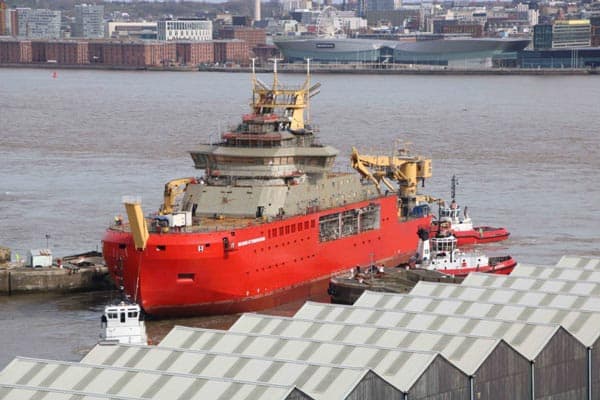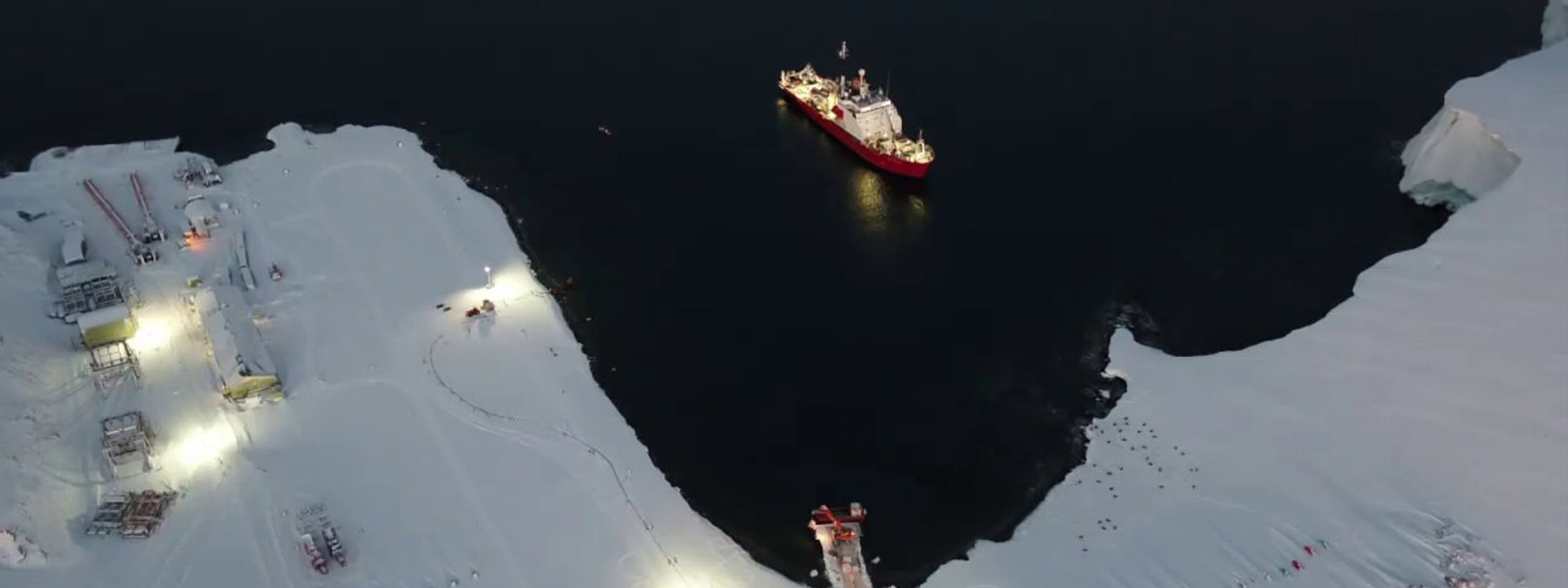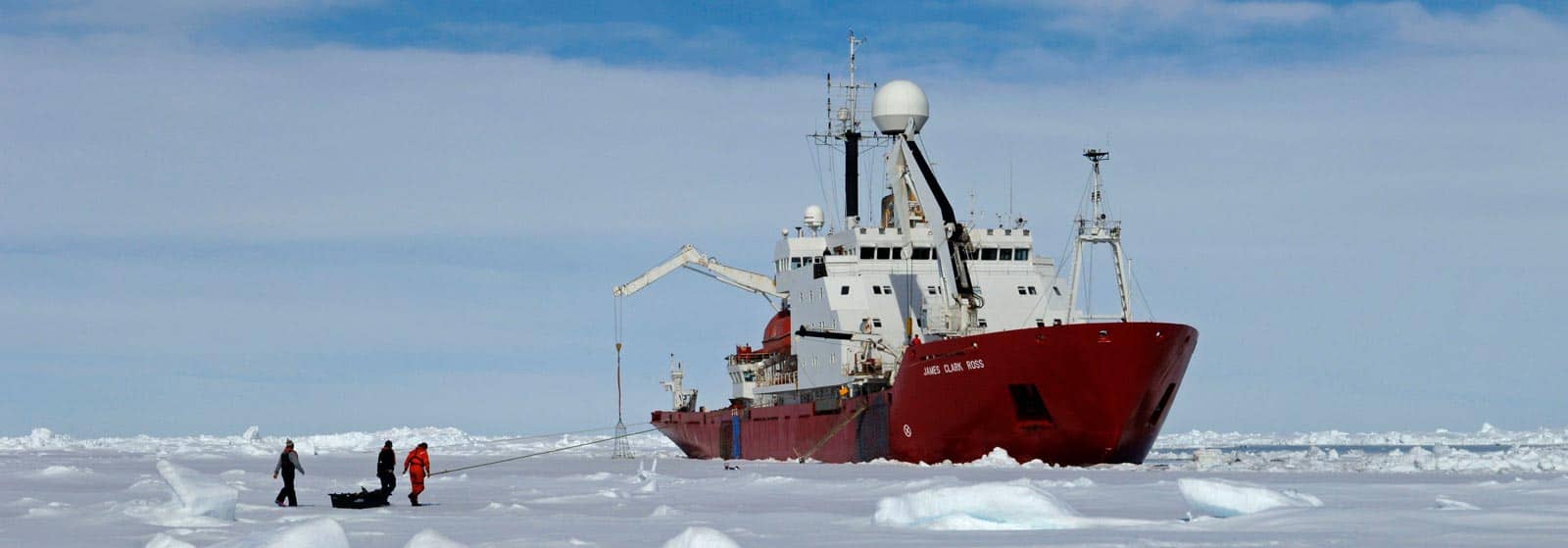When you’re working in extreme environments, where operational windows are measured in weeks not months, having the right kit on board counts. Geraint West, Global Business Manager – Oceanographic, looks at the challenges of remote science and discovers how the latest generation of polar research vessels is leaving shipyards equipped for success.
The polar regions are among the most challenging environments to operate in, with extremes of weather and long, complex, costly logistics trains. Their critical influence on global processes, including climate, biogeochemical cycles and sea-levels, means they’re also among the most scientifically important areas on earth.
That’s why a small number of specialised polar research vessels (RVs), hosting an increasing number of autonomous underwater vehicles (AUVs) and remotely operated vehicles (ROVs), are dedicated to research in these regions.
But, while the underwater robotic assets hosted by RVs are beginning to reshape the way polar research is done, 24-hour darkness, dangerously low temperatures and ice thickness, still make winter-time RV operations all but impossible. That means maximising the effectiveness of operations – when Arctic or Antarctic seas are accessible – is key.
A new breed of polar research vessel
 These are considerations going into the latest breed of specialist polar RV designs, including the British Antarctic Survey’s (BAS) new vessel, the RRS Sir David Attenborough, and the Polar Research Institute of China’s (PRIC) Xue Long 2 (Snow Dragon 2). Although these two flagship vessels are from yards separated by 5,700 miles – Cammell Laird’s yard in Birkenhead, UK, and Shanghai’s Jiangnan Shipyard – they share many similar features.
These are considerations going into the latest breed of specialist polar RV designs, including the British Antarctic Survey’s (BAS) new vessel, the RRS Sir David Attenborough, and the Polar Research Institute of China’s (PRIC) Xue Long 2 (Snow Dragon 2). Although these two flagship vessels are from yards separated by 5,700 miles – Cammell Laird’s yard in Birkenhead, UK, and Shanghai’s Jiangnan Shipyard – they share many similar features.
Both vessels, which are in excess of 120 m long, will transport cargo and scientists to Antarctic bases – up to 90 onboard the RRS Sir David Attenborough and up to 60 on the Xue Long 2. Both will be fitted-out with an impressive range of scientific equipment and vehicles, much of which has to be deployed outboard of the vessel to gather a range of important marine chemistry, ecology, geology, geophysics and sea ice dynamics data. This equipment is deployed with complex heavy handling systems over the stern and side, as well as through, an increasingly common feature in polar RVs, a moon pool. And, significantly for us, both will be equipped with Ranger 2 USBL tracking technology.
Shallow, deep, noisy
We’ve now more than 25 years’ experience building USBL systems for vessels of all shapes, sizes and roles. But we’re particularly proud of the track record Ranger 2 has earned within the international science community. There, it’s seen as the performance standard for tracking vehicles and platforms from vessels, as well as a dynamic positioning (DP) system reference. In fact, it’s already fitted to BAS’ current polar research ship, the RRS James Clark Ross, the Korea Polar Research Institute’s RV Araon (All Sea), as well as other ice strengthened vessels.
 RVs by their nature work in many different environments; shallow, deep, noisy. So USBLs need must be equally versatile. And Ranger 2 is. It’s built on our Wideband 2 acoustic signal technology and 6G (sixth generation) hardware platform, which enables simultaneous and precise tracking of multiple AUVs, ROVs, towed platforms and seafloor landers to slant ranges in excess of 7 km or 11 km if you opt for the LMF version.
RVs by their nature work in many different environments; shallow, deep, noisy. So USBLs need must be equally versatile. And Ranger 2 is. It’s built on our Wideband 2 acoustic signal technology and 6G (sixth generation) hardware platform, which enables simultaneous and precise tracking of multiple AUVs, ROVs, towed platforms and seafloor landers to slant ranges in excess of 7 km or 11 km if you opt for the LMF version.
The power of Wideband and 6G
Wideband 2 and 6G are key to a host of flexible options, meaning that Ranger 2 is a tool-kit that can be used in a wide range of scientific applications. At a basic level, platform and vehicle positioning are supported by a wide offering of acoustic transponder options, ranging from the Wideband Sub-Mini 6+ (WSM 6+), a versatile, 4,000 m-rated USBL transponder that is easy to install, to AvTrak 6, which combines the functions of transponder, transceiver and telemetry link in one low power unit for the optimum AUV solution. Using Sonardyne Messaging Service (SMS), AvTrak 6 enables two-way transmission of vehicle configuration or status messages, as well as position updates from surface.
That’s just the beginning though. HPT, the system’s vessel-mounted transceiver, is a highly effective modem that supports seven telemetry schemes between 100 – 9,000 bps. This means Ranger 2 can track your sensor packages, but also receive the data they are gathering. Something the science community has been asking for is for Ranger 2 to be able to command Sonardyne acoustic releases. That request has now been addressed with our new RT 6 family of releases.
Protection from ice
Mounting and deployment arrangements for your HPT is always critical for optimal performance. For a polar RV, this has particular significance. Building on our experience, with literally hundreds of installations to date, our deployment systems incorporate a number of modifications and adaptions to mitigate against the harsh environmental conditions of the polar regions. These include use of appropriate materials and installation arrangements that maintain the watertight integrity of your double hull.
In addition, the system fitted to these vessels has an option to lower the pole so that the face of the transceiver is flush with the ship’s hull. This does compromise performance to an extent, dependent on the ship’s self-noise and dynamics, but it also protects the transceiver if ice is likely to be encountered under the hull, such as when actively breaking ice. In open waters, optimal performance is achieved with the pole extended to around 2 m below the hull.

Out of range, beneath the ice
As I’ve mentioned, these ships are also home to an expanding fleet of autonomous and robotic systems. The RRS Sir David Attenborough will host a range of vehicles from the UK’s National Marine Equipment Pool, operated by the National Oceanography Centre (NOC). These include the Isis ROV and the Autosub family of vehicles, which includes the now famous Boaty McBoatface Autosub Long Range (ALR) AUV. Indeed, Isis and the Autosub are no strangers to the polar regions, having been deployed from the RRS James Clark Ross.
As we reported in Baseline 21, the newest member of the Autosub family, the 2,000 m depth rated under-ice Autosub (called Autosub2KUI, or A2KUI for short), is being equipped with our SPRINT-Nav 700 hybrid navigation instrument. SPRINT-Nav will give A2KUI a positional accuracy of 0.01% of distance travelled in a typical survey scenario, giving it the positional capability to operate under the ice far beyond the range of the RRS Sir David Attenborough’s Ranger 2 system.
Tracking assets on the go
Of course not all work is carried out from an RV. In many instances, scientists set up camp on the ice, but, even here, USBL can play its part. BAS has recently confirmed its acquisition of one of our Micro-Ranger 2 USBL systems with our Nano beacons for tracking their divers and small vehicles. It’s a neat addition to the Ranger 2 family which has now grown to three models.
Because Micro-Ranger 2 system uses the same software as a ‘standard’ Ranger 2, BAS scientists can start operating it with no additional training. Its compact size also means it’s great for use from small boats and quaysides, so it’s ideal for the ice-covered waters around BAS’ Rothera Research Station on the Antarctic Peninsula. There, it will not only enable geolocation of scientific seabed samples, but also underpin the safety of BAS’ divers in these hazardous environments.
These latest deployments are the latest in our increasing track record in providing underwater positioning and communications technology that enables polar operators to work with confidence, safety and maximum efficiency in ice covered waters. A further tool to support safe operation of RVs in poorly charted ice-covered waters is our Navigation and Obstacle Avoidance Sonar (NOAS), but that’s a story for another day
